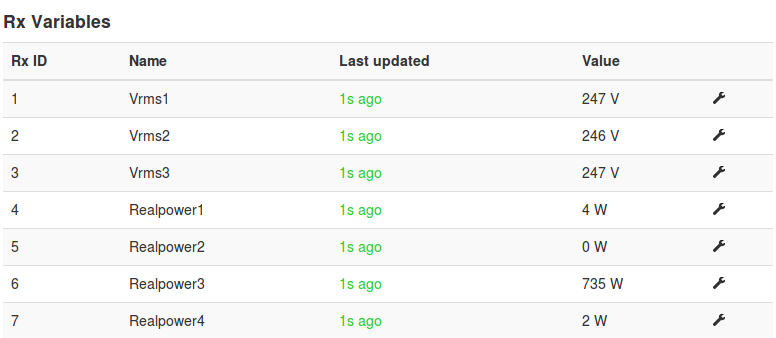RPICT4V3: Difference between revisions
Jump to navigation
Jump to search
No edit summary |
|||
| Line 97: | Line 97: | ||
[[How to calibrate the Voltage Port]] | [[How to calibrate the Voltage Port]] | ||
[[How_to_program_an_Attiny85_or_Attiny84]] | |||
Revision as of 20:31, 23 September 2017
Overview
This is RPICT4V3 version 1. This version does not support over serial configuration.
This page is for board specific information. More information can be found on the generic page for RPICT series.
- 4x AC current sensor
- 3x AC Voltage sensor.
- Compute real power.
- Fit on Raspberrypi 4 holes mounting pattern.
- Attiny84 Mcu

Recommended sensors
- AC Current sensor: SCT-013-000
- AC Voltage sensor:
- UK: 77DB-06-09
- EU: 77DE-06-09
- US: 77DA-10-09 or STA-4190D
Files
Power Association
The RPICT4V3 computes RealPower using the combination of Voltage and Current sensor.
The 4 RealPower are computed using the following combinations:
RealPower1 -> CT1 and V1
RealPower2 -> CT2 and V2
RealPower3 -> CT3 and V3
RealPower4 -> CT4 and V3
Emoncms Output
Emonhub Config
[[11]]
nodename = RPICT4V3
firmware = RPICT4V3_V1_1.ino
hardware = RPICT4V3
[[[rx]]]
names = Vrms1,Vrms2,Vrms3,Realpower1,Realpower2,Realpower3,Realpower4
datacodes = h, h, h, h, h, h, h
scales = 1,1,1,1,1,1,1
units = V,V,V,W,W,W,W
View the data with Python
Please note the uploaded sketch must have CSV enabled. The example script below will be a good starting point.
First of all make sure you have python-serial package installed
$ sudo apt-get install python-serial
Then copy the following into an executable file and run it.
#!/usr/bin/python
import serial
ser = serial.Serial('/dev/ttyAMA0', 38400)
try:
while 1:
response = ser.readline()
z = response.split(",")
if len(z)>=6:
print "Vrm1: %s Volts" % z[0]
print "Vrm2: %s Volts" % z[1]
print "Vrm3: %s Volts" % z[2]
print "RealP 1: %s Watts" % z[3]
print "RealP 2: %s Watts" % z[4]
print "RealP 3: %s Watts" % z[5]
print "RealP 4: %s Watts" % z[6][:-2]
except KeyboardInterrupt:
ser.close()
Sketch Upload
An avr programmer with 6pin ribbon cable is needed for programming. See our programmer called Nanoprog.
There is no jumper to remove to program this board.

